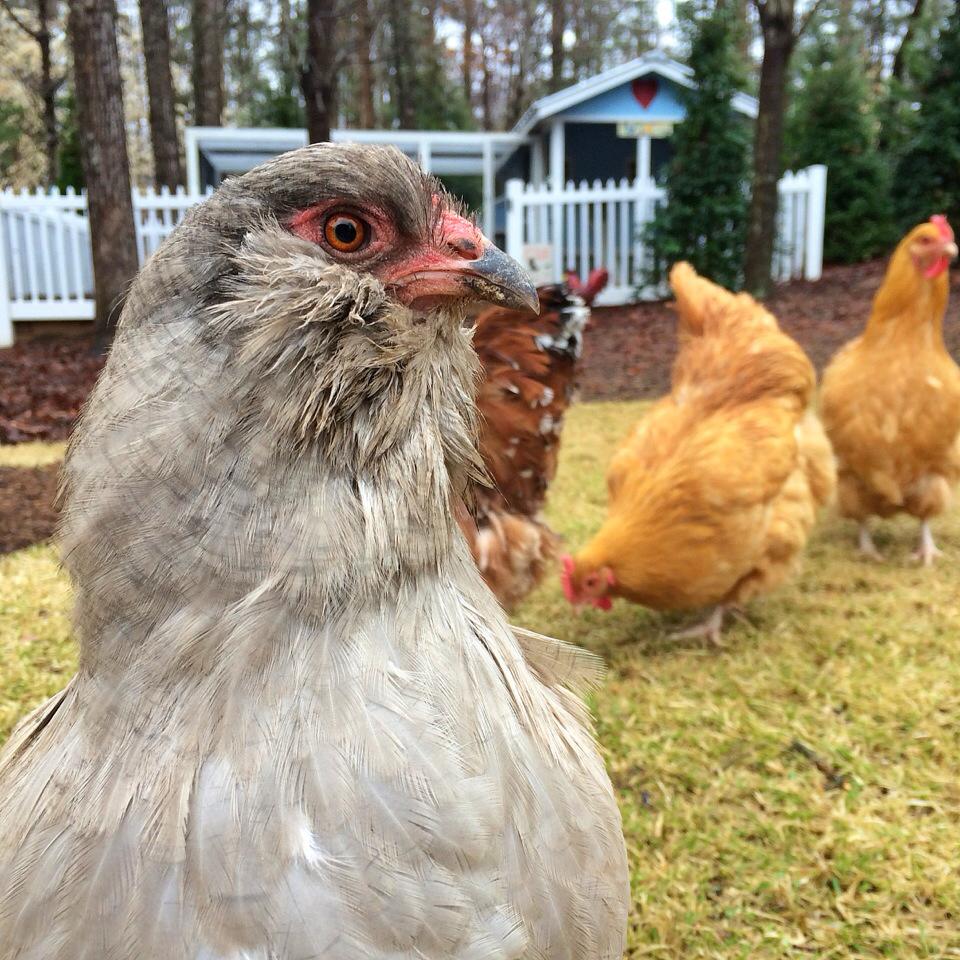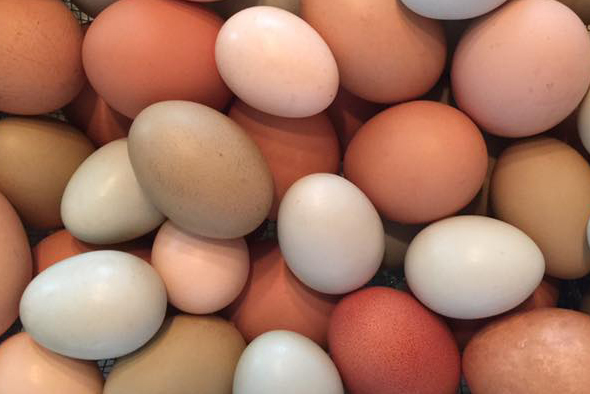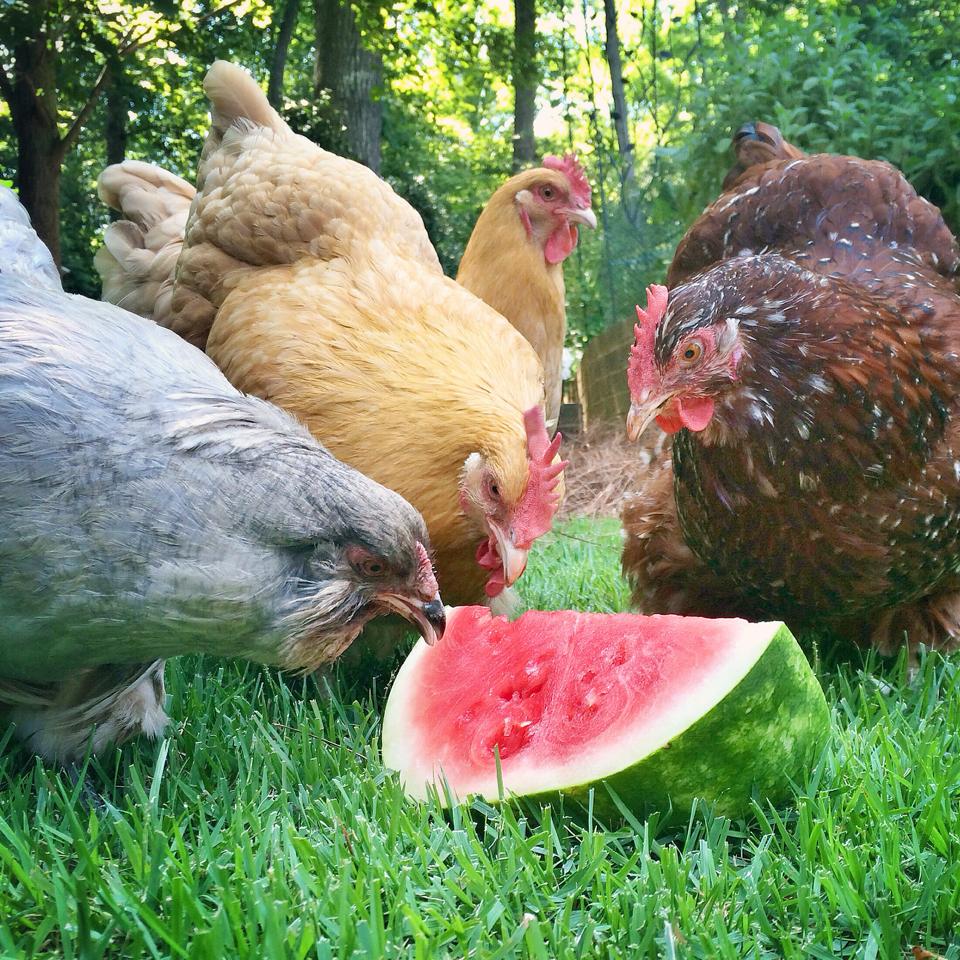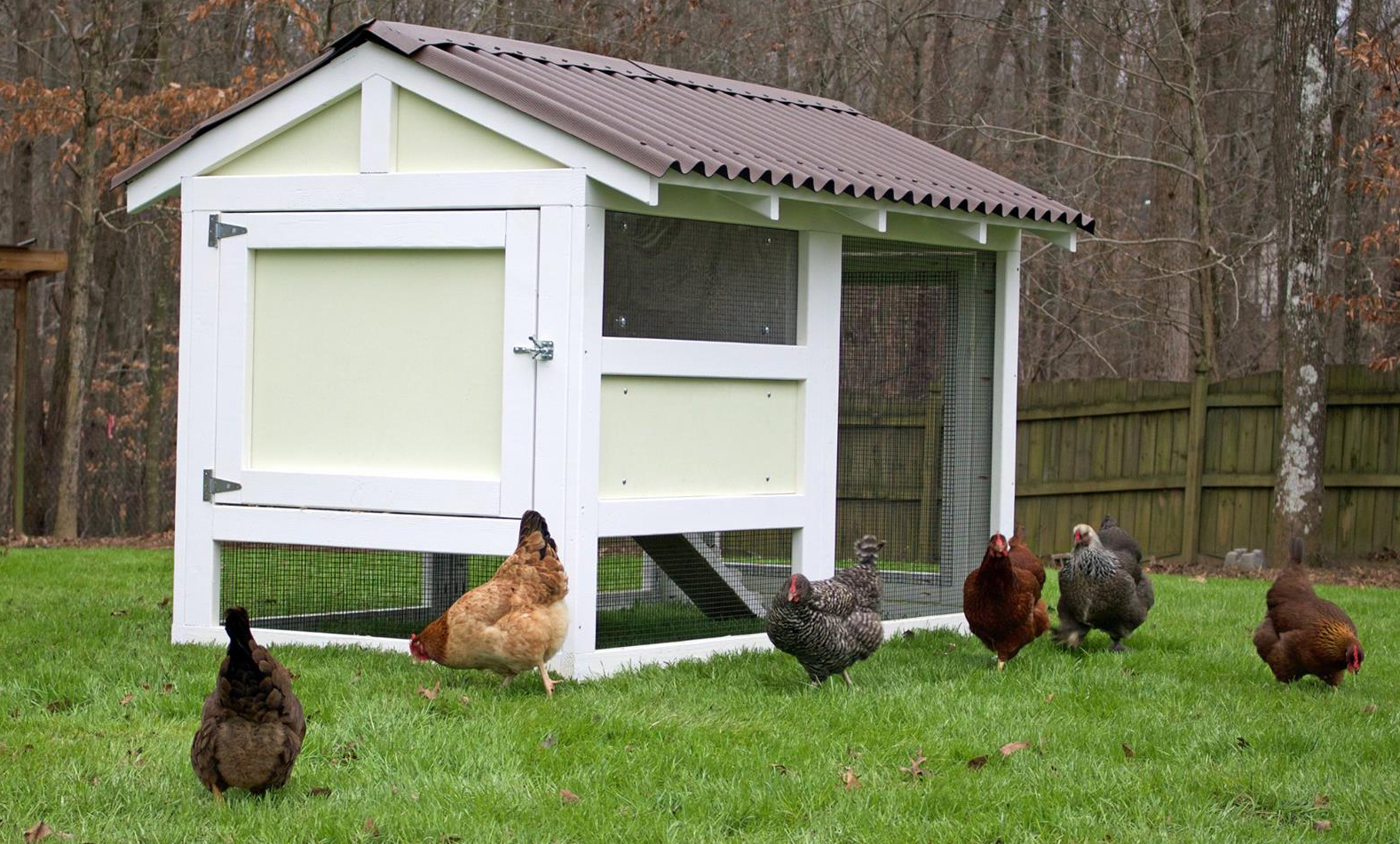Whether or not you are new to the world of backyard chickens, there are many terms that are helpful to know in raising chickens. Here are the ABCs of raising chickens.
Autosex: Chicks that are the offspring of a hen and a rooster of the same breed and variety that can be sorted by gender from the moment they hatch.
Bantam: A miniature chicken, about one-fourth to one-half the size of a regular-sized chicken. Also called a Banty.
 Barnyard chicken: A mixed breed chicken.
Barnyard chicken: A mixed breed chicken.
Beard: The feathers (always found in association with a muff) bunched under the beaks of such breeds as Ameraucana, Faverolles, and Houdan.
Biddy: Affectionate word for a hen.
Biosecurity: Program of disease prevention in a flock.
Bloom: The moist, protective coating on a freshly laid egg intended to limit moisture loss and prevent bacterial contamination of the egg’s contents.
Booted: Having feathers on the shanks and toes.
Brooder box: A heated enclosure used for raising chicks that imitates the warmth and protection a mother hen gives her chicks.
Broody hen: A hen that covers eggs to warm and hatch them. Also refers to a hen that stays in the nest for an extended period without producing eggs.
Bumblefoot: Bacterial infection on the bottom of a chicken’s foot. Characterized by swelling, redness or a black scab on the bottom of a chicken’s foot. It is often caused by a small cut or a hard landing off a roost.
Cape: The narrow feathers between a chicken’s neck and back.
Candling: Procedure of shining light through an egg to determine if it is fertilized or not.
Chick tooth: A horny cap on a chick’s upper beak that helps the chick break through the eggshell, also known as an egg tooth.
Chooks: Popular Australian slang term for chickens.

Clutch: A group of eggs in a nest, usually about 12. The term is commonly used with a group of eggs being sat on, or incubated, by a brooding hen.
Coccidiosis: A disease caused by infestation of the parasite Coccidia within the intestinal tract. Coccidiosis spreads from one chicken to another by contact with feces or ingestion of infected tissue.
Cockerel: A male chicken under 1 year old.
Comb: The fleshy, usually red, crown on top of a chicken’s head.
 Coop: The house where the chickens live and sleep.
Coop: The house where the chickens live and sleep.
Crest: A puff of feathers on the heads of breeds such, as Houdan, Silkie, or Polish; also called a topknot.
Crop: A pouch at the base of a chicken’s neck that bulges after the bird has eaten.
Cull: To kill a non-productive, sick, or inferior chicken from a flock. Down: The soft, fur-like fluff covering a newly hatched chick; also, the fluffy part near the bottom of any feather.
Droppings: Chicken manure or “poop.”
Dust bath: The equivalent of a shower for a chicken, where the chicken thrashes around in the dirt to clean their feathers and discourage body parasites.
Egg tooth: A horny cap on a chick’s upper beak that helps the chick break through the shell, also called a chick tooth.
Egg song: Vocalizations hens may make before or after egg-laying.
Feather legged: Having feathers growing down the shanks, i.e., Cochins and Brahmas.
Fledge: To care for young birds while they are still in the nest.
Flight feathers: The biggest primary feathers on the final half of the wing.
Free range: To allow chickens to roam a yard or pasture at will.
Frizzle: Feathers that curl rather than laying flat, also a breed of chicken.
Gizzard: An organ that crushes food with the help of pebbles or grit.
Grit: Sand and small pebbles eaten by a chicken to grind up grain and plant fiber to aid in digestion, sometimes needs to be added to a chicken’s diet if not allowed to free range.
Hackles: A rooster’s cape feathers.
Hardware cloth: ¼” or ½” welded wire mesh fencing used in chicken coops and runs to protect against predators.
Hen: A mature female chicken.

Hybrid: The offspring of a hen and rooster of different breeds, each of which might themselves be crossbred; often erroneously applied to the offspring of a hen and rooster of different strains within a breed.
Incubate: To maintain favorable conditions for hatching fertile eggs.
Keel: The breastbone, which resembles the keel of a boat.
Litter: Straw, wood shavings, hemp, shredded paper, or anything else scattered on the floor of a chicken coop, run or brooder to absorb moisture and manure.
Mash: A mixture of wet or dry coarse ground feed.
Marek’s disease: A viral disease common in chickens. Commonly prevented by a vaccination administered immediately after chicks hatch.
Molt: The annual shedding and renewing of a bird’s feathers.
Muff: The feathers (always found in association with a beard) sticking out from both sides of the face, under the beak, of such breeds as Ameraucana, Faverolle, and Houdan; also called “whiskers.”
Nest box: A safe place, usually in a henhouse, where chickens lay eggs.
Nest egg: A wooden or plastic egg put in the nest box to encourage hens to lay there.
Newcastle disease: A viral respiratory disease common in chickens. Newcastle disease can spread very quickly within a flock. Commonly prevented with a series of vaccinations.
 Pecking order: The social rank of chickens.
Pecking order: The social rank of chickens.
Perch: The place where chickens sleep at night; the act of resting on a perch; also called a “roost.”
Pinfeathers: The tips of newly emerging feathers.
Pip: The hole a newly formed chick makes in its shell when it is ready to hatch.
Point of lay: The age at which bird could start laying (approximately 20 weeks).
Pullet: A female chicken under 1 year old.
Range fed: Chickens that are allowed to graze freely.
Roo: Slang for a male chicken.
Roost/Roost bar: The place where chickens spend the night; the act of resting on a roost; also called “perch.
Rooster: A male chicken; also called a cock.
Run: The enclosed area, attached to a chicken coop, in which birds are allowed to run around and peck.
Saddle: The part of a chicken’s back just before the tail.
Scales: The small, hard, overlapping plates covering a chicken’s shanks and toes.
Scratch: The habit chickens have of scraping their claws against the ground to dig up tasty things to eat, or any grain fed to chickens.
Sexed: Newly hatched chicks that have been sorted into pullets and cockerels. Sexing of day old chicks is approximately 90% accurate.
Sexing: One of the many methods of identifying a chicken’s gender.

Sex links: Cross-bred chickens whose color at hatching is differentiated by sex, thus making chick sexing an easier process.
Shank: The part of a chicken’s leg between the claw and the first joint.
Sickles: The long, curved tail feathers of some roosters.
Spur: The sharp pointed protrusions on a rooster’s shanks.
Straight run: Newly hatched chicks that have not been sexed; also called “unsexed” or “as hatched.”
Unthrifty: Unhealthy appearing and/or failing to grow at a normal rate.
Vent: The outside opening of the cloaca, through which a chicken emits eggs and droppings from separate channels.
Wattles: The two red or purplish flaps of flesh that dangle under a chicken’s chin.
Whiskers: The feathers (always found in association with a beard) sticking out from both sides of the face, under the beak, of such breeds as Ameraucana, Faverolle, and Houdan; also called muffs.






Comments: 0
There are not comments on this post yet. Be the first one!